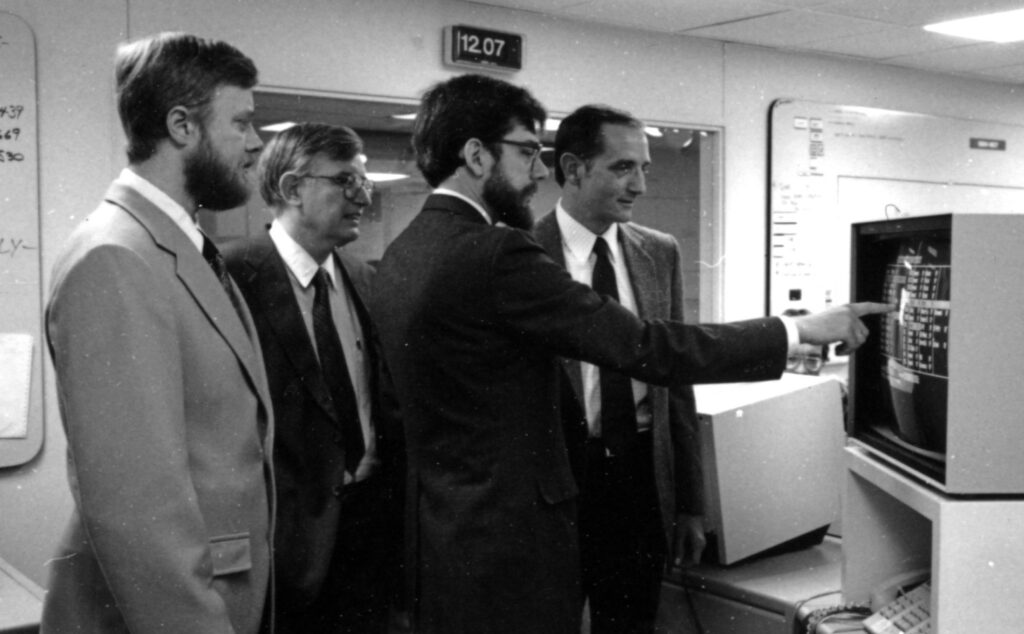Fortieth Anniversary of an Internet Milestone and Our Founder Was There!
Forty years ago today marks a milestone that jump-started the current Internet.
At noon on Oct. 4, 1983 in Cambridge, Massachusetts, the Arpanet was split into multiple networks. It was a key event in the Defense Communications Agency’s (DCA) roll-out of the Defense Data Network (DDN) and essentially launched the Internet as we know it today.

The formal Arpanet transition to TCP/IP had already occurred in January 1983, a date often quoted as the birth of the Internet. However, TCP/IP did not segregate military, academic, research, and commercial traffic. All these communities were still operating on the same physical and logical network. The military needed a separate network for its critical traffic. Consequently, the October 4, 1983 split separated the DoD and the non-DoD parts to form the MILNET and a much smaller Arpanet.
On October 4, 1983, Heidi Heiden entered the command at a NOC terminal to execute a carefully engineered script. What was a single list of Arpanet IMPs (packet switches) became multiple lists and we watched the IMPs move from one column to other columns. In the photo, I am explaining to Heidi Heiden the IMPs disappearing from the Arpanet column and populating new network columns. The complex splitting and rejoining was performed seamlessly in just a few minutes.
There were at least two important outcomes from this event.
First, it removed the last barrier for the military to move onto a single military-grade interoperable network. Previously, the DoD operated hundreds of small single-function networks using incompatible vendor-specific and contractor-specific network protocols. At the time of this split the DoD had more than 800 hosts running on separate dedicated-function networks. This event opened the floodgates to a sudden demand for TCP/IP software with an immediate market of 800 hosts and growing.
Second, the new smaller Arpanet unshackled the research community from DoD restrictions. It also spurred the academic community to fund the NSFNET where new network research was again permitted to thrive. The following year, the NSFNET was formed, which eventually replaced the remaining Arpanet.
The Arpanet split, plus the later NSFNET TCP/IP mandate, gave TCP/IP the big market boost it needed.
Yes, the Internet was born in January 1983, but in October of the same year, the medical staff in the delivery room gave that baby a slap which got it screaming for air. The scream said, “feed me TCP/IP!” The rest is history.
There were many people at BBN who worked professionally and tirelessly to pull off this feat. I am grateful and proud to have been a part of the team.
